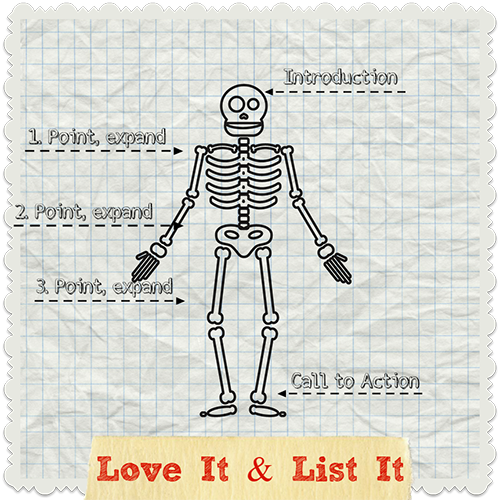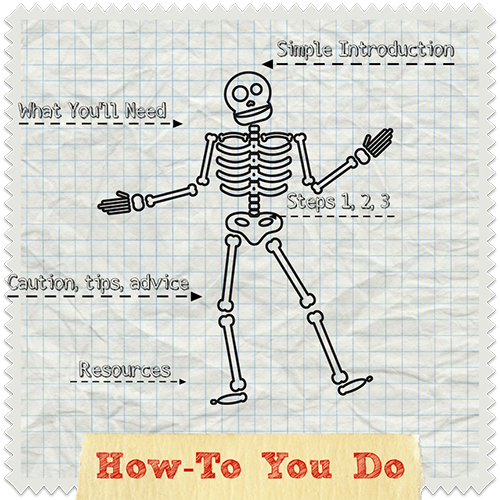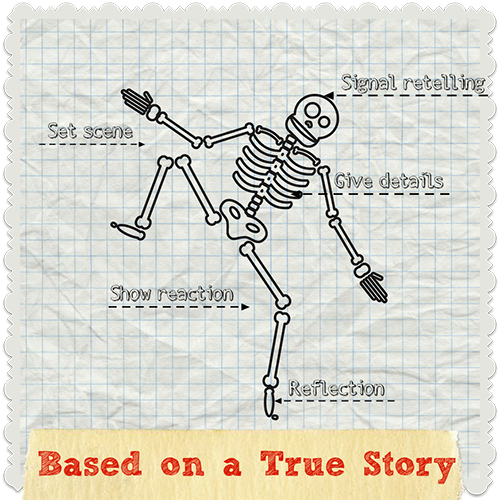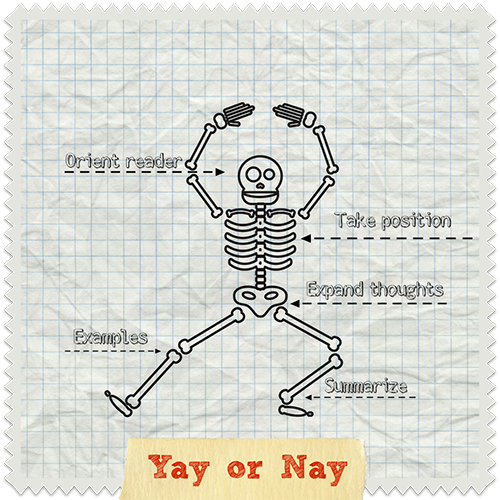As a writer, it's easy to fall into the same routine. This is especially true in blogging, as you know your audience and want to meet their specific needs. The same old format just becomes a habit for a writer, but it can be downright boring for a reader.
Even though Halloween is fast approaching, you have no reason to fear. Keeping your readers interested is key to maintaining an audience; scaring them away is a thing of the past. We've provided a variety of blog structure ideas for posts that will treat your readers to something new and exciting!
Love It & List It
Who says you can't have both? The "Love It & List It" format will provide your readers with a list, from Top 10 to Best of the Worst and everything in between. This format is excellent for a readership that's on the go and looking to scan through your blog quickly. It's also a perfect format for sharing, which will enable your posts to reach a wide audience through social media.

A brief introduction will explain what you're listing. Then, provide your list in number format, either counting up to 10 or down to 1. Your post should end with a call to action (CTA), which is intended to provoke an immediate response from your readers. For example, if you're listing sites for marketers to save to their favorites bars, your readers should have new bookmarks for their browser by the end of the post.
How-To You Do
The "How-to You Do" post will provide readers with a step-by-step guide on how to do something. This can be anything from how to build a bookshelf to how to write for social media. This type of article is usually for readers who are looking specifically for the steps listed in your article, so everything should be kept short, sweet, and very easy to understand.

Start with a very simple introduction that explains what the end result will be in a very obvious way. Then, you should have an "ingredients" list of sorts—things that your reader will need before following the instructions. The instructions will then be listed in chronological order with easy-to-follow steps. The conclusion should include cautions, any tips for completing the steps, and advice for finishing the project successfully. Include a resources list at the end if necessary. That's also where you can add some high-quality links if you want to improve SEO.
Based on a True Story
Tired of lists? There's also the "Based on a True Story" post for bloggers who want to build a more personal relationship with readers. This type of post can tickle readers' funny bones or warm their hearts. Displaying your personality in a blog post is effective for gaining trust and building a loyal readership, which will help you gain subscriptions to your blog.

In your introduction, you should make it very clear that you'll be retelling a story. Try to catch readers' interest by invoking curiosity, either by hinting at the conclusion of the story or by starting with a very unusual line that will garner attention. Then, set the scene for your story and give all the little details. The climax of this post will be your reaction to the situation at the time it occurred. Finally, reflecting on your post should present the takeaway of the piece to the reader.
Yay or Nay
The "Yay or Nay" post is, put very simply, a review post. It can be an unboxing of a new product, an analysis of a new television show, or a review of the new burger joint down the street. This one is fun to play with, as it can be strictly informational or extremely entertaining when executed correctly. It also personalizes your blog space, as sharing your own opinion is something only you are capable of doing.

You should first orient the reader by explaining what you'll be reviewing. Unless your post will be purely informational, you must then take a position. Try to do this early on in the article, as the bulk of your post should be your actual opinion, not just a summary. In the body of the post, you should expand your thoughts, providing examples that illustrate exactly why you've taken your particular stance. Lastly, summarize your opinion in a short conclusion. Remember: it's not important that your readers actually agree with you, but it is important to at least provoke a reaction or a discussion.
Blog structure is a simple art that can be difficult to refine. It's easy to fall into the same old pattern, but mixing up something as simple as your post's format will rattle your readers' bones and ensure that they stay interested. So, pull out the dusty old skeletons in the closet and shake them off. After all, what better time to decorate your blog than Halloween?
Image source: barsrsind/BigStockPhoto.com





